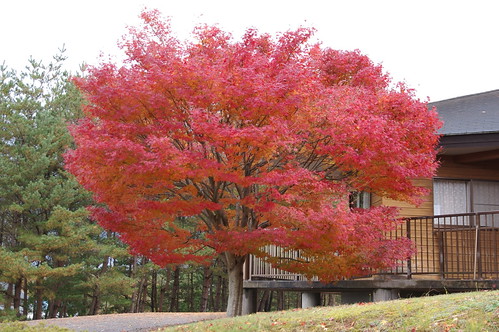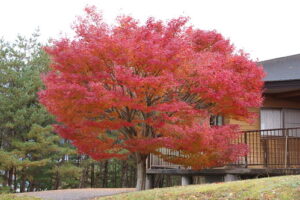
Date March 22, 2023
Verticillium wilt is a disease that is caused by a fungus. This disease can be fatal to trees. It can be diagnosed using a microscope and testing the soil for the fungus. Once the diagnosis is made, the proper treatment plan will be recommended. Treatment should be handled by a professional and may include fungicide applications, pruning, or removal of infected roots.
Verticillium Wilt Symptoms
Image via Flickr by pelican
Healthy trees enhance a happy home, but they can be vulnerable to disease and pests. To protect your greenery from potential harm, it’s important to stay vigilant so you know when something might not look right. Keep an eye out for changes in foliage color as well as signs such as:
- The affected leaves will appear yellowed or have brown spots on them.
- The disease can affect multiple branches on the same tree, making it look as if many different problems are happening at once.
- The branches start dying from the tips.
- The maple appears to be stressed due to these conditions: soil degradation, drought, or from being waterlogged.
Prevention Methods for Verticillium Wilt
To help prevent problems with verticillium wilt, good sanitation practices should be followed. Avoid introducing infected plants or using contaminated tools and containers to maintain the health of your Japanese maple. Soil solarization is another helpful technique when fighting off this fungal infection. Breaking up the soil in a sunny area before covering it for several weeks will create enough heat that verticillium and other harmful organisms will be destroyed. To protect against future outbreaks, only resistant species or cultivars should be planted on the affected site as well.
How To Treat Infected Japanese Maples
Although there is no magical solution to curing verticillium wilt in a Japanese maple, with the right knowledge and care, it’s possible to nurture the tree back to health. Maintaining a consistent level of soil moisture is key. Make sure you water generously during dry spells and supplement with an organic mulch like wood chips or shredded leaves. Additionally, regular pruning can go a long way in protecting your Japanese maple from further damage. Dead branches should be snipped off so that the tree can maintain its lush appearance and robustness.
For added protection, avoid over-fertilizing your Japanese maple, and try to use certified disease-free planting materials when repotting. Furthermore, proper soil drainage can help reduce fungal colonization and eliminate any possibility of over-watering. Prune affected branches as soon as you notice them, then apply fungicides that are specifically designed to treat this particular condition. Finally, if your tree has already been infected with verticillium wilt, consider applying beneficial bacteria directly onto the bark of the tree.
Unfortunately, Japanese maples are particularly susceptible to damage caused by verticillium wilt due to their shallow root system. It is important to monitor the health of your plants and take preventative measures such as mulching and avoiding overwatering. Early diagnosis is essential to controlling the disease with fungicide treatments, pruning, or removal of affected branches and roots.









